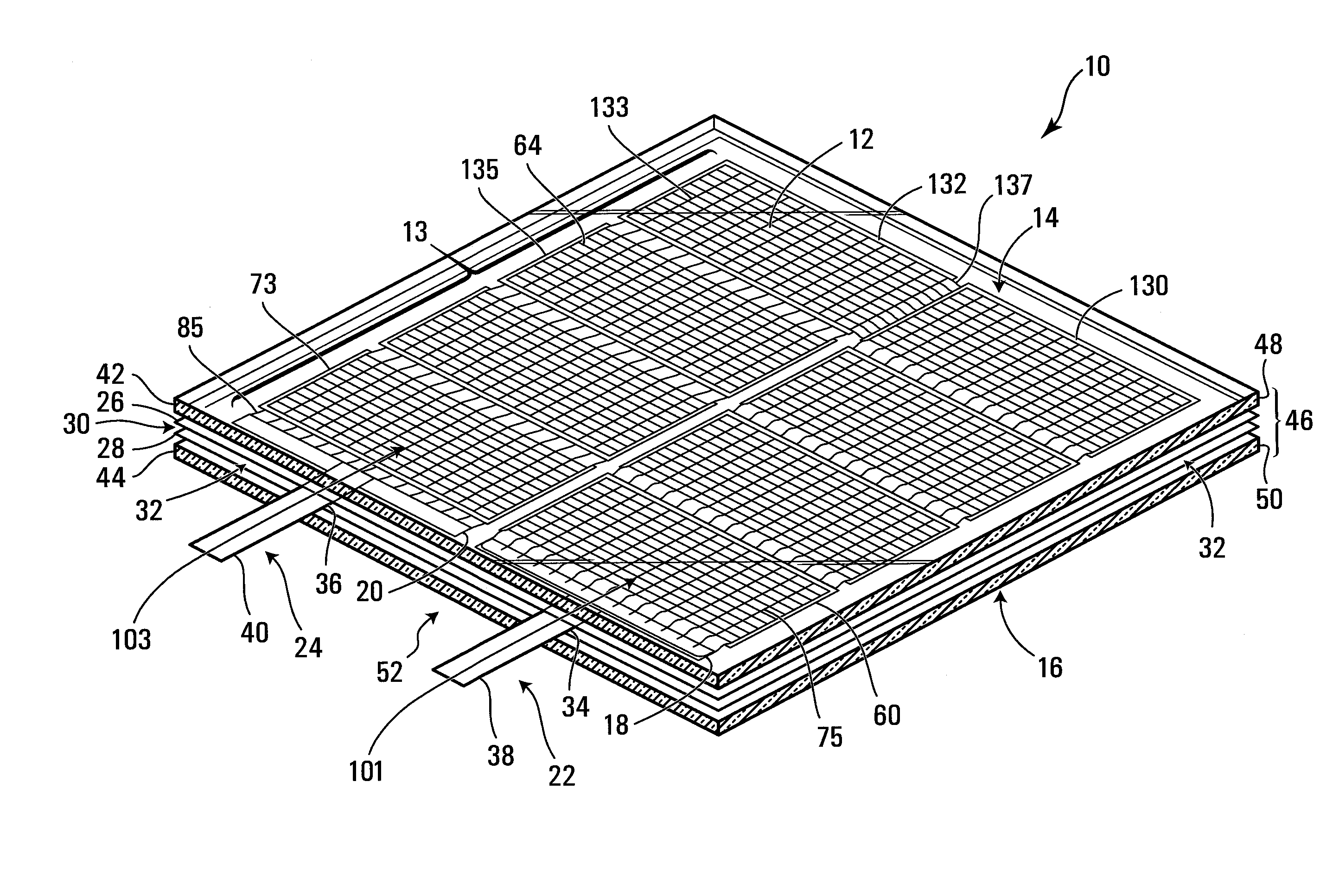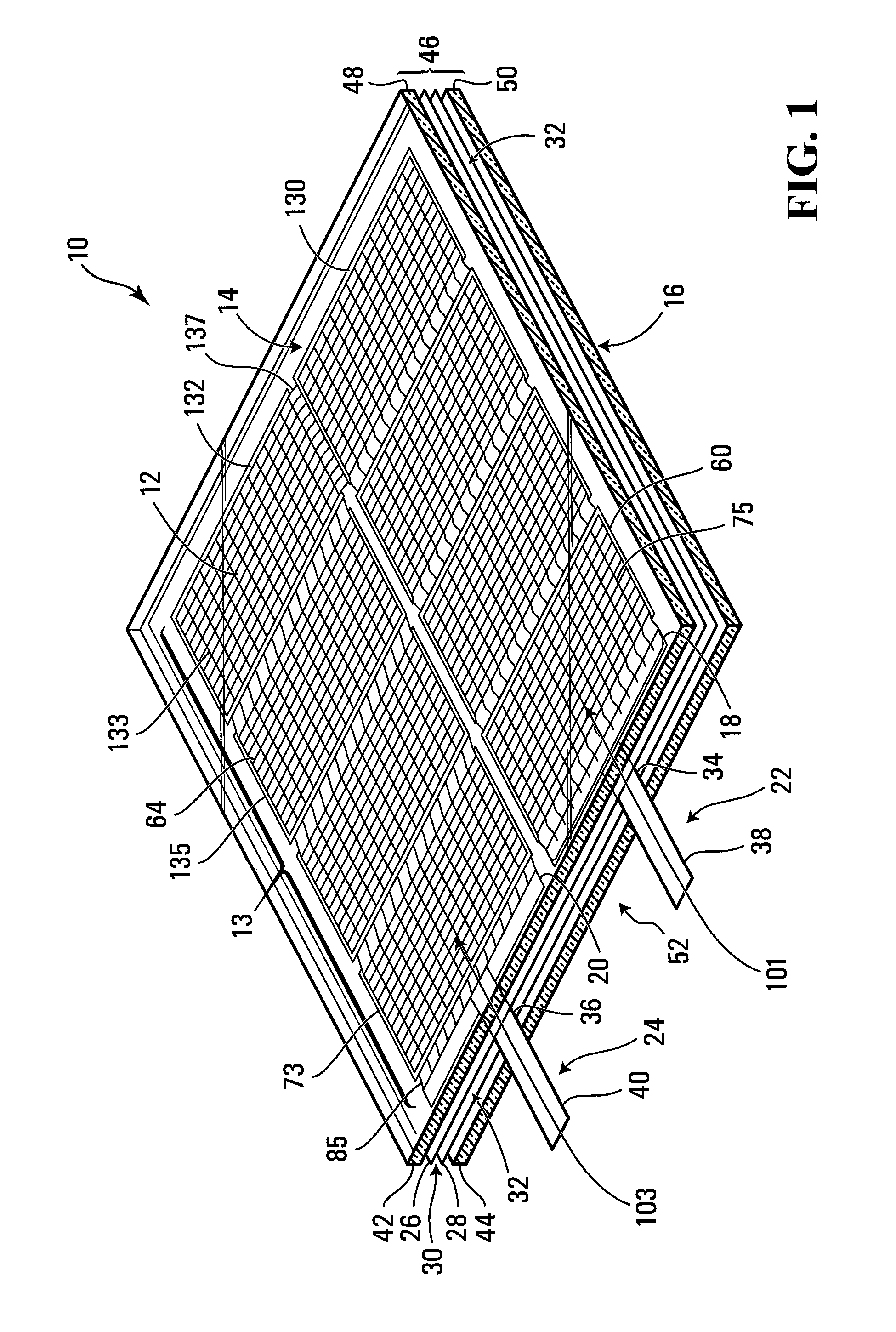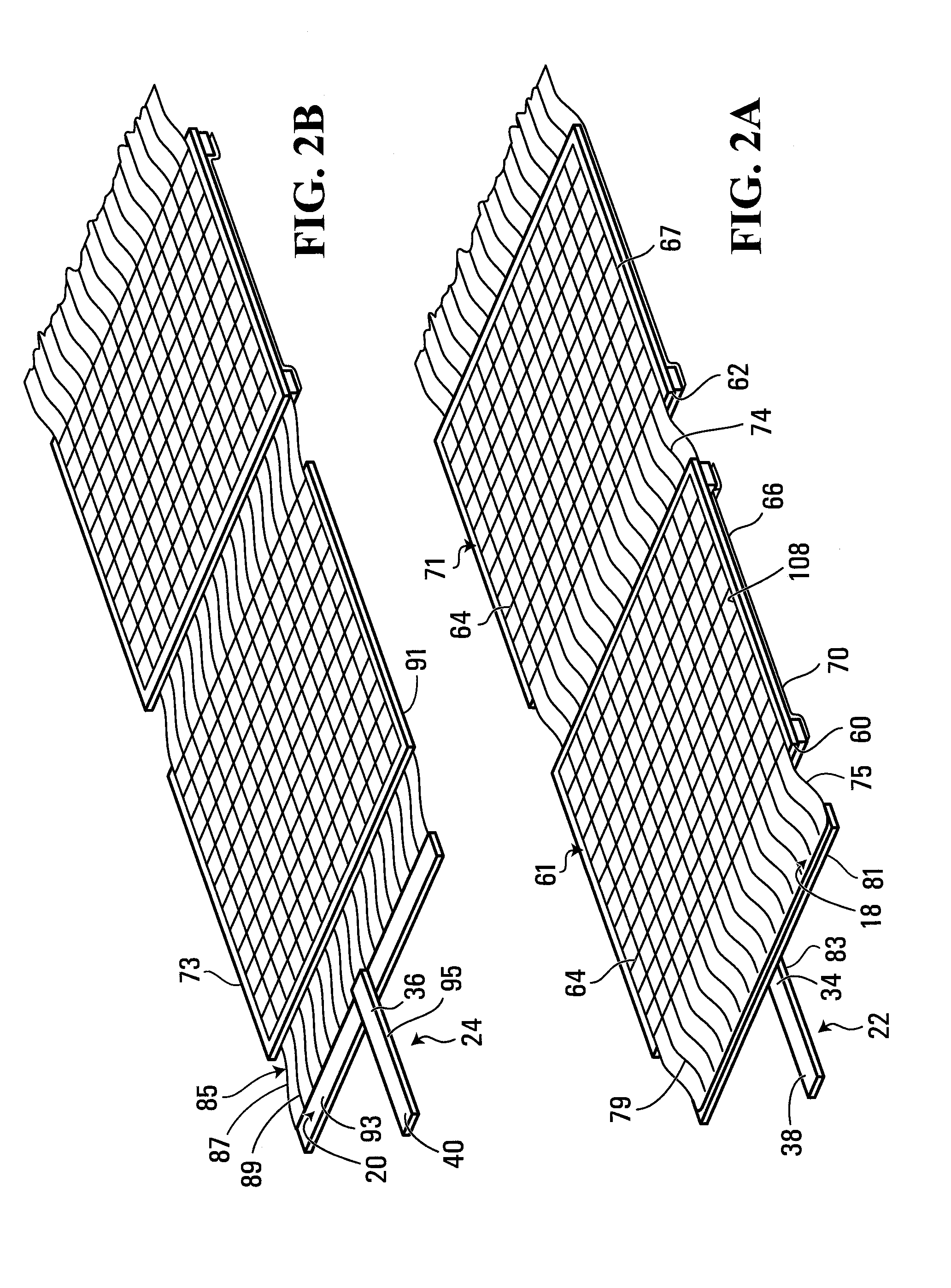Photovoltaic module with edge access to pv strings, interconnection method, apparatus, and system
a photovoltaic module and edge access technology, applied in the direction of cell components, electrochemical generators, cell connection, etc., can solve the problems of reducing the power output affecting the production efficiency of the pv module, and affecting the quality of the pv module. , to achieve the effect of reducing the complexity and cost of pv module production, simplifying and increasing the production capacity of the pv module, and more optimal and less costly
- Summary
- Abstract
- Description
- Claims
- Application Information
AI Technical Summary
Benefits of technology
Problems solved by technology
Method used
Image
Examples
Embodiment Construction
[0126]Referring to FIG. 1, a PV module apparatus according to a first embodiment of the invention is shown generally at 10. The apparatus 10 includes a plurality of PV cells shown generally at 12 arranged in a planar array 13 having a front side 14 and a back side 16. The PV cells are electrically connected together to form at least one string. In the embodiment shown the PV cells are connected together to form a string of 8 PV cells, having a positive terminal 18 and a negative terminal 20 for supplying electrical energy to a load. Positive and negative conductors 22 and 24 are connected to the positive and negative terminals 18 and 20 respectively. The apparatus further includes front and back encapsulating sheets 26 and 28 disposed on the front and back sides 14 and 16 respectively of the array 13 to form a sub-laminate 30 comprised of the array and the front and back encapsulating sheets. The sub-laminate 30 has a first outer perimeter edge 32 that extends all the way around the...
PUM
| Property | Measurement | Unit |
|---|---|---|
| temperature | aaaaa | aaaaa |
| thickness | aaaaa | aaaaa |
| thickness | aaaaa | aaaaa |
Abstract
Description
Claims
Application Information
 Login to View More
Login to View More - R&D
- Intellectual Property
- Life Sciences
- Materials
- Tech Scout
- Unparalleled Data Quality
- Higher Quality Content
- 60% Fewer Hallucinations
Browse by: Latest US Patents, China's latest patents, Technical Efficacy Thesaurus, Application Domain, Technology Topic, Popular Technical Reports.
© 2025 PatSnap. All rights reserved.Legal|Privacy policy|Modern Slavery Act Transparency Statement|Sitemap|About US| Contact US: help@patsnap.com



